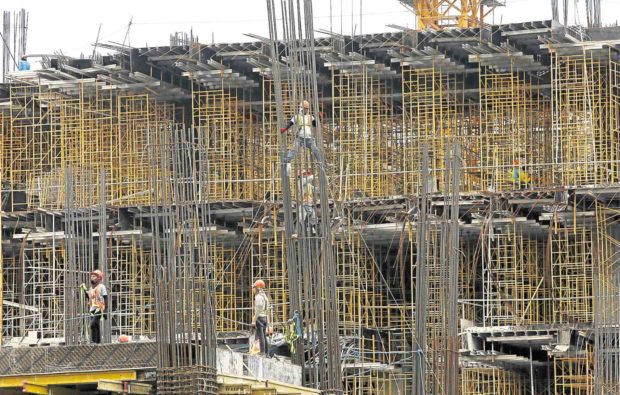Amid global trade war, PH rises

Across all sectors of the economy, productivity is set to benefit from the government’s flagship “Build, Build, Build” program.
The publication of Oxford Business Group’s 2018 annual report on the Philippines comes at a critical juncture in the global economy, as the world’s two leading powers maintain their destructive downwards spiral on bilateral trade tariffs amid an outflow of funds from emerging markets as the United States tightens monetary policy.
The emerging markets of Southeast Asia remain at risk of sustaining significant collateral damage from the heavyweights’ trade war, not only from falling demand for their manufactured goods and raw materials in China’s industrial value chain as it suffers a decline in orders from its top trade partner, but also because Chinese exports once destined for the United States could be diverted to markets in the region, and potentially depress prices to the detriment of domestic producers.
Perhaps more than any other Asean emerging economy, the Philippines is well positioned to ride out the current storm raging against international trade.
Thanks to its vast, consumer-driven internal market, the country is less dependent than its Asean counterparts on exports and trade to power GDP growth, despite having high exposure to both China and the United States, which are the country’s largest and third-largest bilateral trade partners, respectively.
Confidence in the strength of the domestic market was apparent in OBG’s recent survey of Philippines-based executives, with a resounding 92 percent of participants declaring they had positive or very positive expectations of local business conditions in the coming 12 months, and 74 percent saying their firm was likely or very likely to make a significant capital investment within the same period.
This optimism was recorded despite ongoing concerns about inflation as the government pushes forward with its disruptive tax reform agenda.
Furthermore, local respondents were much less inclined to cite trade protectionism or fluctuations in Chinese demand as short- to medium-term risks to their domestic economy than their peers in other Asean states surveyed by OBG.
Nevertheless, the Philippines cannot ignore one of the key reasons behind the Trump administration’s bellicose approach to the rising superpower it considers a “strategic competitor”: “Made in China 2025” and the Sino quest for supremacy in the technologies that are powering the Fourth Industrial Revolution.
This ambitious 10-year blueprint for placing China at the forefront of advanced manufacturing and next-generation technologies could have profound implications for the Philippines and the wider region, making Asean countries increasingly dependent on Chinese innovations in everything from public transport systems to smartphones, while limiting opportunities for manufacturers and developers based in Asean to play a productive, long-term role in China’s supply and value chains due to strict local content requirements.
In a period marked by China’s relentless economic ascendance, rapid technological innovation and a rising tide of protectionism, the emerging markets of Asean are being forced to evaluate their structural strengths and weaknesses to see how they can maintain positive growth trajectories and long-term competitiveness. Through the course of the year-long research project OBG undertook to produce The Report: The Philippines 2018, we were able to observe up-close the adaptation strategies being pursued by government entities and private companies across the full spectrum of established and emerging business sectors.
In the lucrative business process outsourcing (BPO) industry, for example, we observed how the sector was adjusting to advancements in artificial intelligence and robotic process automation, which threaten to erode the inherent competitive advantages that have made the Philippines the world’s leading call center destination.
Both public and private stakeholders made it clear that if the segment is to continue to thrive over the long term, investments in up-skilling must be made alongside investments in technology, allowing human resources to be transferred to more value-creating activities. In manufacturing, we learned how the government’s Inclusive Industrial Innovation Strategy, also known as i3s, was attempting to address many of the current bottlenecks to industrial growth and value addition, such as skills and technology shortages, and the lack of effective linkages across private companies, government agencies, research institutions and academia.
In retail, a vital cog in the machinery of the Philippines’ consumption-driven economy, we saw how the Department of Trade and Industry’s E-commerce Roadmap was paving the way for a vibrant digital marketplace, although more progress is required in the development and adoption of digital payment systems and know-your-customer mechanisms before this segment can reach its true potential.
Across all sectors of the economy, productivity is set to benefit from the government’s flagship Build, Build, Build (BBB) program, with rising public expenditure on much-needed infrastructure supplemented by comprehensive tax reform and official development assistance (ODA) from international partners, most notably China and Japan.
Although progress has been made on BBB, it is becoming clear that certain capital projects are not moving as quickly as hoped due to bureaucratic delays in the release of ODA funds, making unsolicited proposals and so-called hybrid public-private partnerships increasingly appealing options for ensuring the Duterte administration’s infrastructure mandate is fulfilled.
Most importantly, if the Philippines is to join the elite group of high-income nations by 2040, as outlined in the government’s long-term vision, much will depend on whether the administration’s commendable efforts to expand access to secondary and tertiary education will result in a labor pool that is properly equipped for the demands of an innovation-led economy.
In a country where only 0.4 percent of university graduates attained a mathematics degree in 2015/16, 1 percent obtained a science degree, and 12 percent earned a degree in engineering and technology, continued emphasis must be placed on ensuring the quantity of graduates is matched by the quality of teaching and suitability of the courses they study.
(Patrick Cooke is based in Manila as Oxford Business Group’s regional editor for Asia. He can be reached at pcooke@oxfordbusinessgroup.com)